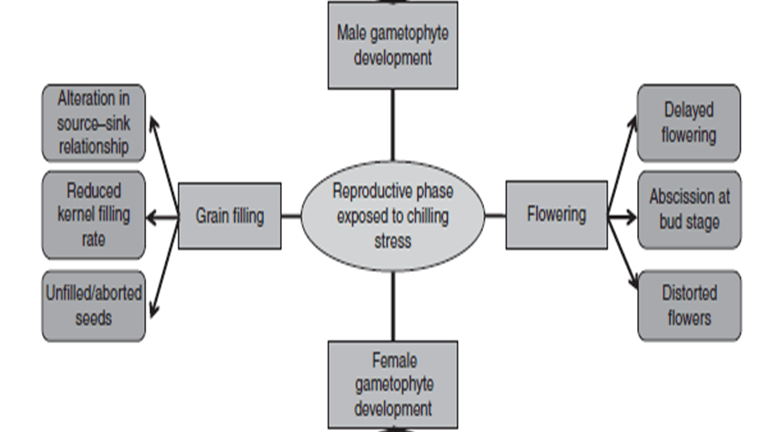Temperature stress Chilling & Freezing Stress
Temperature stress Chilling & Freezing Stress
- Temperature variation throughout the globe has significantly affected the distribution of plants and animals.
- With the change in temperature, there is significant deviation in the growth and survival of the living systems from the normal growth occurring under the normal temperature condition.
- The temperature optimal for one organism may not be optimal for the growth of another organism.
- Normally the growth permitting range of temperature is 10-45°C is called Biokinetic zone.
- Some desert plants function best at the upper limit of biokinetic zone, while certain marine organisms in cold water survive better in the lower limit of biokinetic zone.
- Many micro-organism isolated from hot springs are capable to grow at temperature as high as 95°C.
- While other organisms isolated from cold environment have capability to grow at as low as 10°C.
- All the plants and microorganism are frequently exposed to following arbitrary defined stress conditions depending upon their temperature optima for growth.
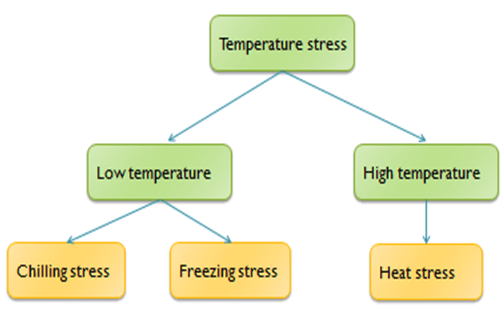
Chilling Injury
- Chilling injury is damage to plant parts caused by temperatures above the freezing point (32°F).
- When plants growing at relatively warm temperatures (25 to 35°C) are cooled to 10 to 15°C, chilling injury occurs:
- When plants are exposed to sudden and short-term exposure to low temperature, not below 4°C.
- Plants of tropical or subtropical origin are most susceptible.
- Chilling-injured leaves may become purple or reddish and in some cases wilt. Both flowers and fruit of sensitive species can be injured.
- Growth is slowed,
- Discoloration or lesions appear on leaves
- The foliage looks soggy, as if soaked in water for a long time.
- If roots are chilled, the plants may wilt
- Frost and Freeze Injury
- Frost injury and freeze injury are closely related.
- Frost damage occurs during a radiation freeze;
- Freeze damage occurs during an advection freeze.
- In both cases, ice crystals form in plant tissues, dehydrating cells and disrupting membranes.
- Radiation freezes occur on clear, calm nights when plants radiate (lose) more heat into the atmosphere than they receive.
- When the air temperature at plant level is near or below freezing, the temperature of the plants is likely to be colder than the temperature of the air.
- If plants become sufficiently cold, the water in them freezes and cells are damaged.
- The frost that appears on plants is simply ice crystals that form on the plant surface, equivalent of dew forming at temperatures above freezing.
- The frost itself does not damage plants; plants are damaged by ice crystals that form within their tissues.
- Advective freezes occur when an air mass with a temperature below freezing moves into an area and displaces warmer air, causing the temperatures of plants to become low enough for ice crystals to form within their tissues.
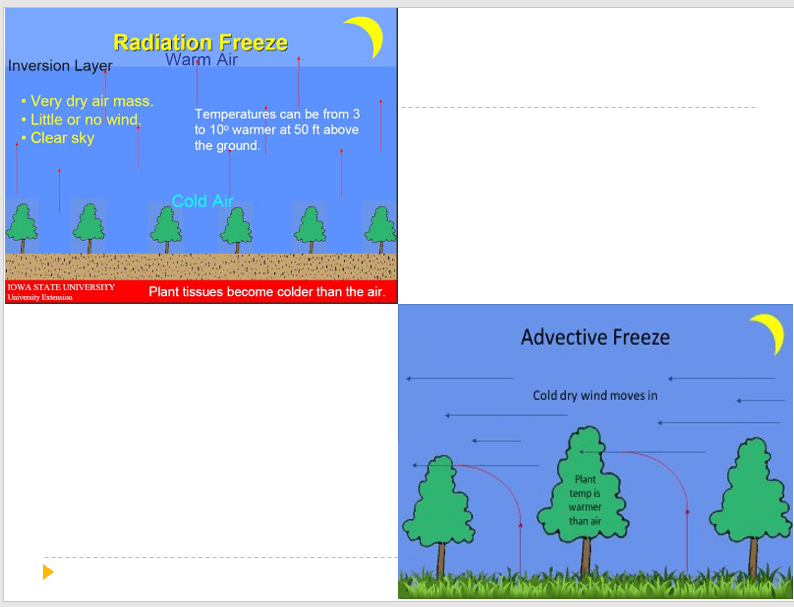
Heat injury
- This is caused by adverse high temperature condition. It refers to all the high temperature induced structural and functional anomalies of the cells, tissues and organs which may adversely affect their normal functioning or may finally lead to death of the organisms.
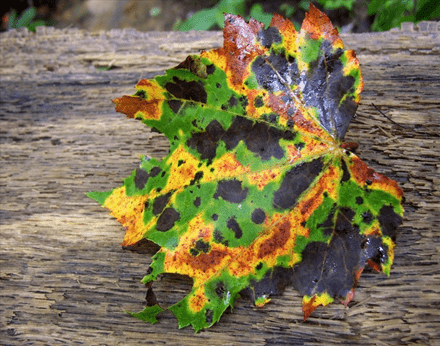
Classification of plants based on temperature tolerance
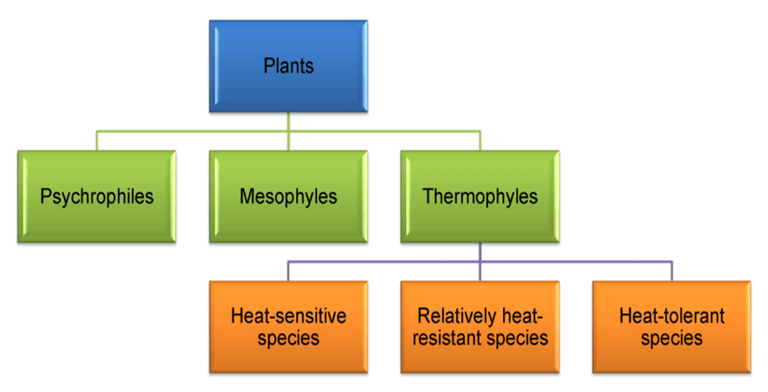
Obligate psychrophiles are those organisms having a growth temperature optimum of 15°C or lower and that cannot grow in a climate beyond a maximum temperature of 20°C
Facultative psychrophiles An organism that grows best at temperatures below 20°C but can also grow at temperatures above 20°C.
Chilling symptoms
Cellular changes:
- membrane structure and composition,
- decreased protoplasmic streaming,
- Plasmolysis
- Altered metabolism:
- Increased or reduced respiration, depending on severity of stress, production of abnormal metabolites due to anaerobic conditions.
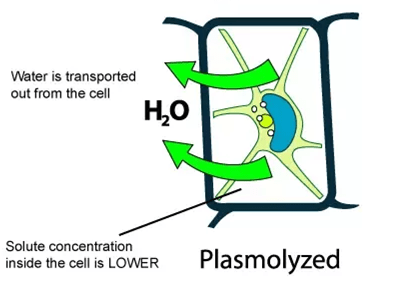
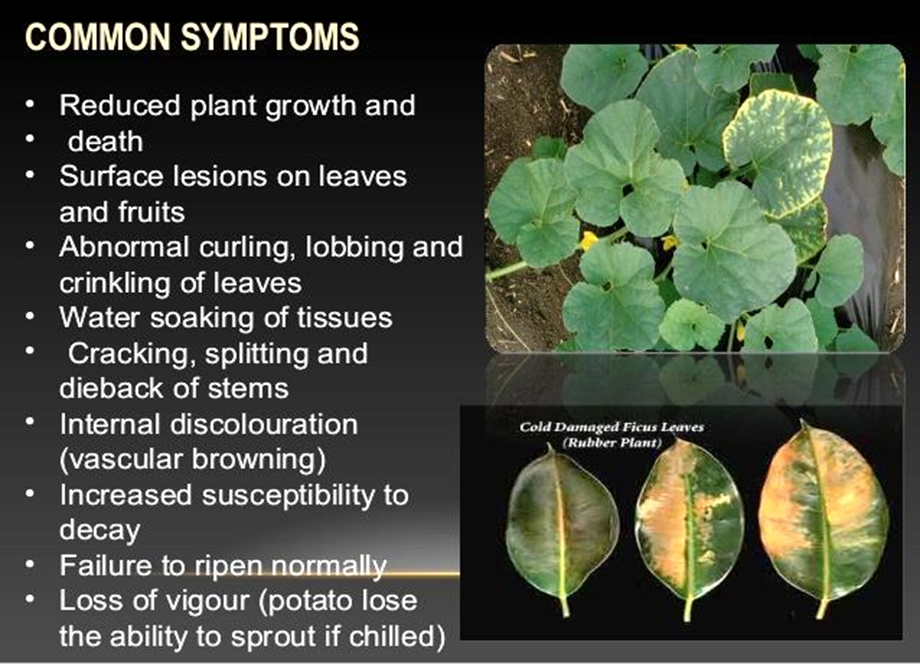
Common symptoms of chilling injury
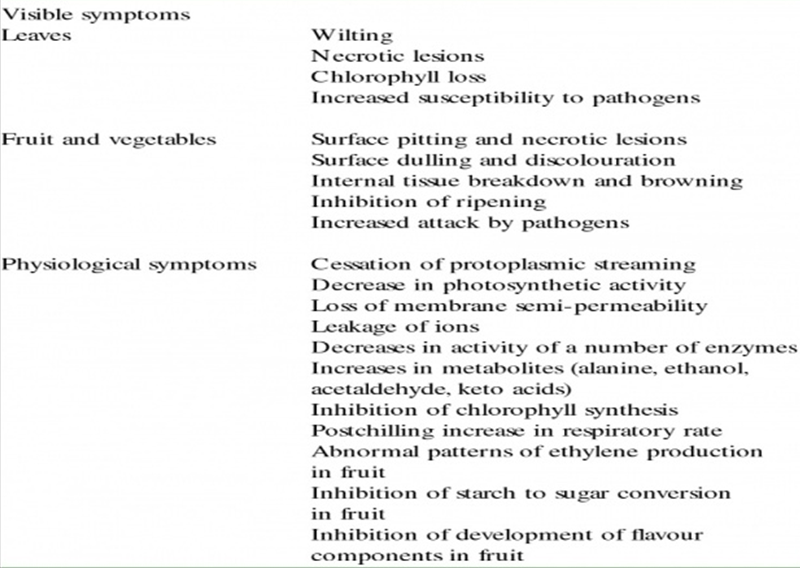
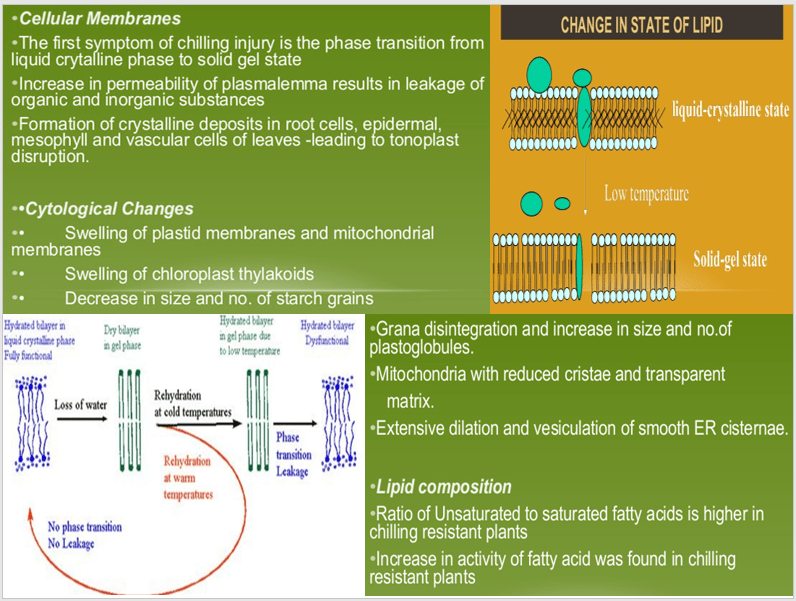

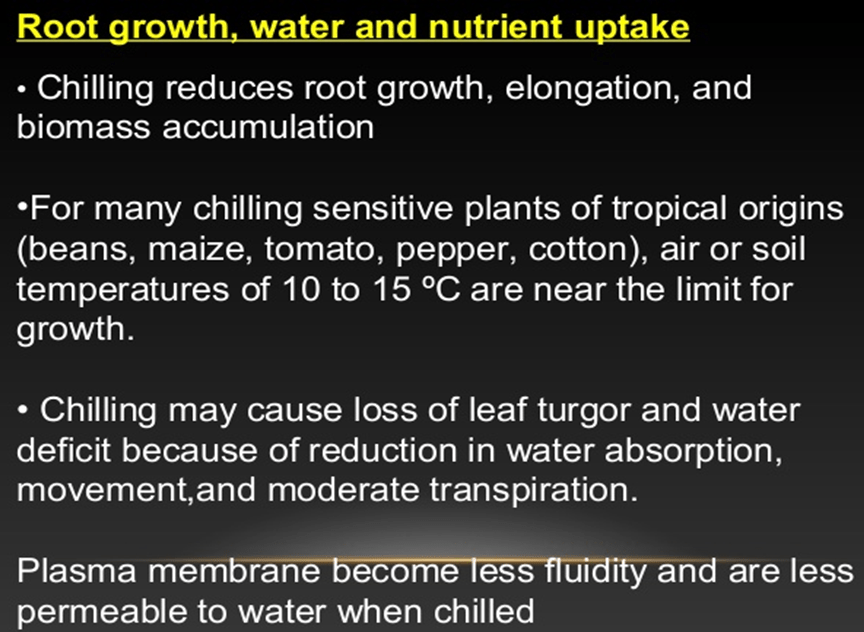
Chilling Sensitivity
- Spectrum of chilling sensitivities
- Chilling sensitivity has been identified, not surprisingly, in plants from tropical or subtropical climates, but also in species from temperate latitudes.
- Among crop plants, typically sensitive species are cotton, cowpea, groundnut, maize and rice, as well as mung bean and tomato. Pea and spinach, on the other hand, are chilling resistant.
- Yet, large variations in sensitivity can be observed within one plant species, between varieties or cultivars.
- This can be illustrated by the example of tomato. The cultivated tomato species, Lycopersicon esculentum, is strongly affected by a growth temperature of 10–12°C. On the contrary the wild tomato Lycopersicon hirsutum at temperatures lower than 10°C at night.
- In wheat, the winter varieties can be sown in autumn whereas the spring varieties, more productive but also more sensitive to cold, are sown when the winter is over.
- Another factor that controls chilling sensitivity is physiological age. In some species like the Orchid phalaenopsis, adult leaves have become insensitive to cold, whereas younger leaves are sensitive.
- Chilling sensitivity can also vary with the developmental stage. Dry seeds of sensitive species can be stored at chilling temperature with no harm. One-day-old maize seedlings are unharmed by 4 days at 4°C whereas 3-dayold seedlings have acquired maximum sensitivity.
One growth phase that is particularly sensitive to cold is the reproductive phase.
